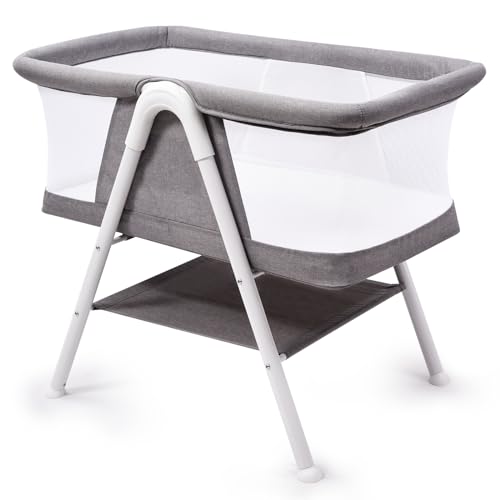8 Tips To Improve Your Baby Cot To Bed Game
Transitioning from Baby Cot to Bed: A Comprehensive Guide for Parents
The journey from a baby cot to a bed marks a considerable milestone in a kid's development. It symbolizes independence and a step towards growing up. Nevertheless, this shift can often be intimidating for both moms and dads and children. Comprehending the procedure, the best timing, and how to make the shift smoother can considerably help in this journey. This short article checks out the necessary to consider when transitioning your child from a cot to a bed, including common FAQs, suggestions, and a structured plan to ensure the process is as seamless as possible.
Why Transition from a Cot to a Bed?
Developmental Milestones
Transitioning to a bed is usually prompted by several elements:
Physical Growth: As kids grow, they outgrow their cots. The average size for a convertible cot is generally meant for babies approximately 3 or 4 years old.
Cognitive Development: As toddlers end up being more curious and conscious of their surroundings, they might try to climb up out of their cots, posing safety threats.
Potty Training: Once a kid is potty trained, they may need much easier access to the restroom, which a bed can help with.
Brother or sisters: The arrival of a brand-new brother or sister can likewise require this shift, as the cot might need to be released up.
When to Make the Transition
There is no one-size-fits-all answer to when a kid need to transition from a cot to a bed. However, here are some indications that it might be time:
- Climbing Out: If the child is attempting to climb up out frequently.
- Age Consideration: Many specialists advise this transition around the age of 2 to 3 years, although every kid is unique.
- Need for Independence: Children might reveal a desire for a big-kid bed.
Types of Beds Suitable for Toddlers
Not all beds are produced equivalent when it concerns young children. Here's a breakdown of appropriate bed types:
Bed Type
Description
Pros
Cons
Young child Bed
Smaller, lower to the ground, frequently with side rails.
Size-appropriate for young children; stability.
Minimal lifespan as they outgrow quickly.
Single Bed
Standard size bed implied for older children.
Lasts longer; can be used for several years.
May be too huge for a young child; threat of falling.
Convertible Crib
Crib that transforms into a toddler bed.
Versatile; saves money in the long run.
Can be costly; some might not offer full-sized alternatives.
Loft Bed
Raised bed with area beneath for play or storage.
Optimizes area; enjoyable for kids.
Not suitable for very young kids; safety issues.
Actions to Transition Smoothly
Transitioning to a bed can be simplified with careful preparation. Here's a step-by-step guide:
1. Prepare the Space
- Select a Location: Decide where the bed will be put.
- Childproof the Room: Since kids are naturally curious, ensure that furniture is stable, sharp edges are covered, and dangerous items are out of reach.
- Keep Familiar Items: Retain favorite toys and bedding to offer comfort in the brand-new environment.
2. Introduce the Bed
- Involve Your Child: Let your kid help choose their bed or bed linen to create excitement.
- Explain the Transition: Make them comprehend that they are becoming a big kid by having a big-kid bed. Use Highly recommended Online site .
3. Make the Swap
- Bedtime Routine: Keep the bedtime regular consistent. This produces familiarity and convenience throughout the shift.
- Assistance: Offer them peace of mind however avoid being extremely protective; it's important to motivate independence.
4. Address Fears and Concerns
- Talk About Fears: Children might have fears of falling or the dark; talk about these openly.
- Reinforce Safety: Use guard rails on the bed at first and explain what to expect throughout the night.
5. Monitor and Adapt
- Be Patient: It may require time for your child to change fully.
- Stay Consistent: Maintain the nighttime routine, even when problems emerge.
Frequently Asked Questions Regarding Transitioning from Cot to Bed
Q1: How long does the shift from a cot to a bed normally take?
A1: The shift can differ significantly among children— varying from a couple of days to a few weeks— as they adjust to oversleeping a brand-new space.
Q2: Should I buy an unique young child bed?
A2: Investing in a young child bed can make the transition simpler because they are designed with safety in mind; nevertheless, if you prefer to go straight to a single bed, that can work too with the right precaution.
Q3: What if my kid keeps rising?
A3: This is typical! Motivate them to remain in bed and establish favorable reinforcement by rewarding them for remaining in bed through the night.
Q4: Is it all right to shift to a huge bed too early?
A4: Transitioning too early can result in sleep interruptions. It's necessary to examine the readiness of the kid based on their signs and advancement.
Transitioning from a baby cot to a bed is a substantial action for both kids and moms and dads. With thoughtful preparation and understanding of the child's needs, moms and dads can make the shift smoother and more enjoyable. By recognizing when to make the transition, understanding the kinds of beds readily available, and keeping a consistent regimen, moms and dads can alleviate worries and foster a sense of security for their child throughout this exciting new chapter. Eventually, every kid is different, and patience is type in making this journey a favorable experience.
